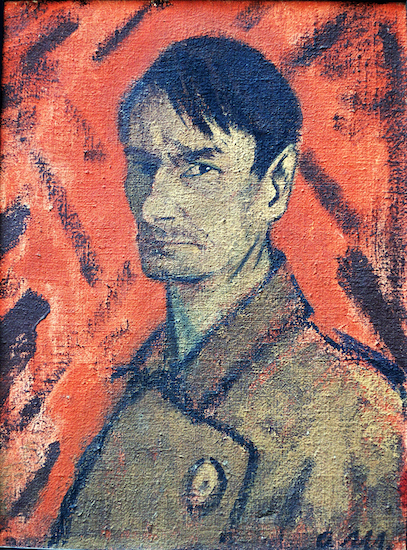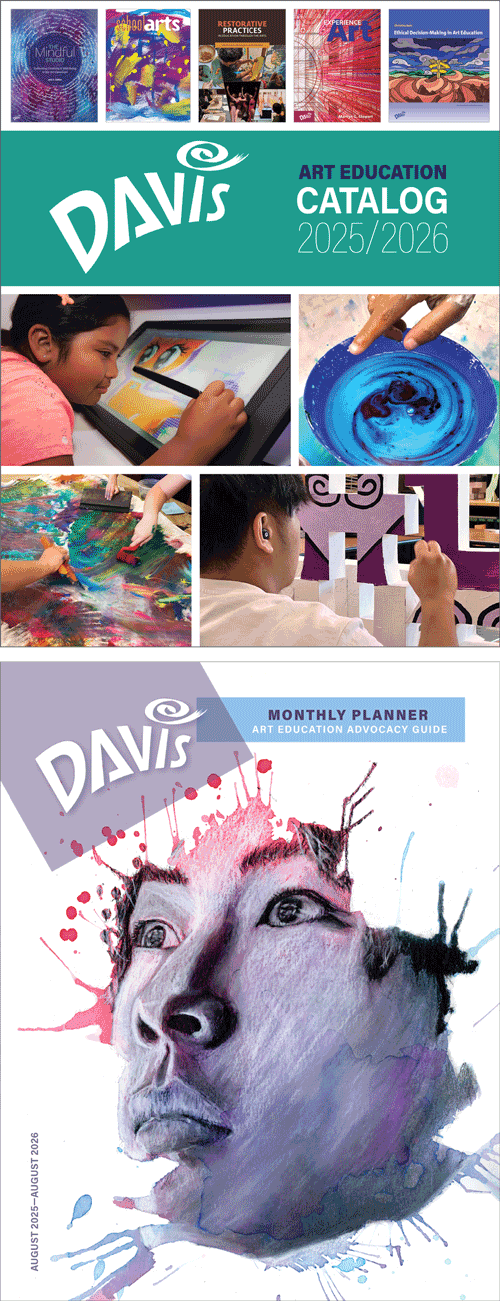Artist Birthday: Otto Müller
Otto Müller was a German Expressionist artist, member of the artists’ group Die Brücke, and best known for his brilliant palette and scenes of bathers. His type of Expressionism leaned more in the direction of the poetic and romantic, rather than the anarchic.
Artist Birthday for 16 October: Otto Müller (1874-1930 Germany)
 |
|
Otto Müller, Self-Portrait, 1921, oil on canvas, 71 x 54 cm Neue Pinakothek, Bayerisches Gemäldesammlung Munich, © 2025 Dr Ron Wiedenhoeft / Saskia, Ltd. (PGF-0072) |
Müller produced many self-portraits, some that included his models, and many, like this, where he is looking to the left. The stern expression, unkempt boy bangs, and thin, severe line of the mouth combine with the gestural line and sketchily applied paint to form the perfect brooding self-portrait by an Expressionist, even though Müller was far from as brooding as his fellow Brücke painters. This Self-Portrait reveals another difference from the other Brücke artists, in that Müller preferred painting on unprimed canvas, which adds to the rough surface texture and heightens the emotive quality. This particular selfie comes from the period of his divorce from his first wife. Some critics have equated the melancholy and brooding nature of his many self-portraits to his unhappy relationships with women.
Background
Expressionism in northern European art of the early 1900s was an offshoot of art movements in the late 1800s that emphasized romanticism, expressive color, or symbolic (rather than representational) subject matter. The objective in expressionist work was to express the artist’s feelings about the subject and to elicit an emotional reaction from the viewer. German Expressionists built on the aims of Post-Impressionist artists who rejected the Impressionist emphasis on optical accuracy and turned towards the world of the spirit. They employed a variety of styles to give visible form to their feelings, often relying on direct, sometimes crude expressions. Their art was basically an expression of inner meaning through outer form.
Late 1800s inspirations for German Expressionists included Van Gogh, and Symbolist artists Böcklin, Hodler, Munch and Ensor. Symbolism represented a rejection of the scientific emphasis of Impressionism of light and color in favor of pathos-heavy subjects from Greek and Roman literature as well as German Romantic literature. Expressionists were also influenced by German medieval and Renaissance woodblock prints, non-western art such as African and Oceanic, folk art, and the art of the Romantic and Hellenistic periods in western art. Symbolism, by far, had the strongest impact on subject matter.
Two artists’ groups evolved in Germany devoted to Expressionism in the first decade of the 1900s: Die Brücke (The Bridge) in Dresden and Berlin, and Der Blaue Reiter (The Blue Rider) in Munich. Die Brücke, meaning "The Bridge," founded in 1905, had key members Ernst Ludwig Kirchner (1880-1938) , Erich Heckel (1883-1970), Karl Schmidt-Rottluff (1884-1976), and Fritz Bleyl (1880-1966), later Max Pechstein (1881-1955), Otto Müller, and Emil Nolde (1867-1956) joined later. The name of their group reflected their belief that their form of Expressionism was a bridge to “all revolutionary and fermenting elements” in art that distanced itself from conservative academic art.
Otto Müller was born in Liebau, part of the then-German Empire, now part of the Czech Republic (Czechia). During his youth he learned lithography in Görlitz. From 1894 to 1896 he studied painting at the Royal Academy of Fine Arts in Dresden under an academic/Symbolist artist who pronounced Müller untalented. Rejecting the conservative curriculum of German academies, Müller self-studied painting for two years in Munich.
In 1899 Müller returned to Dresden where he intensively worked on developing his personal mode of expression in painting. In 1908 he moved to Berlin, where in 1910 he joined the Expressionist group Die Brücke. He was close to Kirchner and Heckel, whose bright palette he adopted, replacing his more muted colors. He preferred landscape and bathers as subject matter. In 1919, after World War I (1914-1918), he was a professor alongside other progressive painters such as Bauhaus artist Oskar Schlemmer (1888-1943) at the State Academy of Applied Arts (Gewerbschule) in Breslau. Between 1924 and 1930 he undertook investigation into the Roma and Sinti cultures in southeastern Europe, believing that their “liberal” lifestyle reflected his own ideals.

Comments